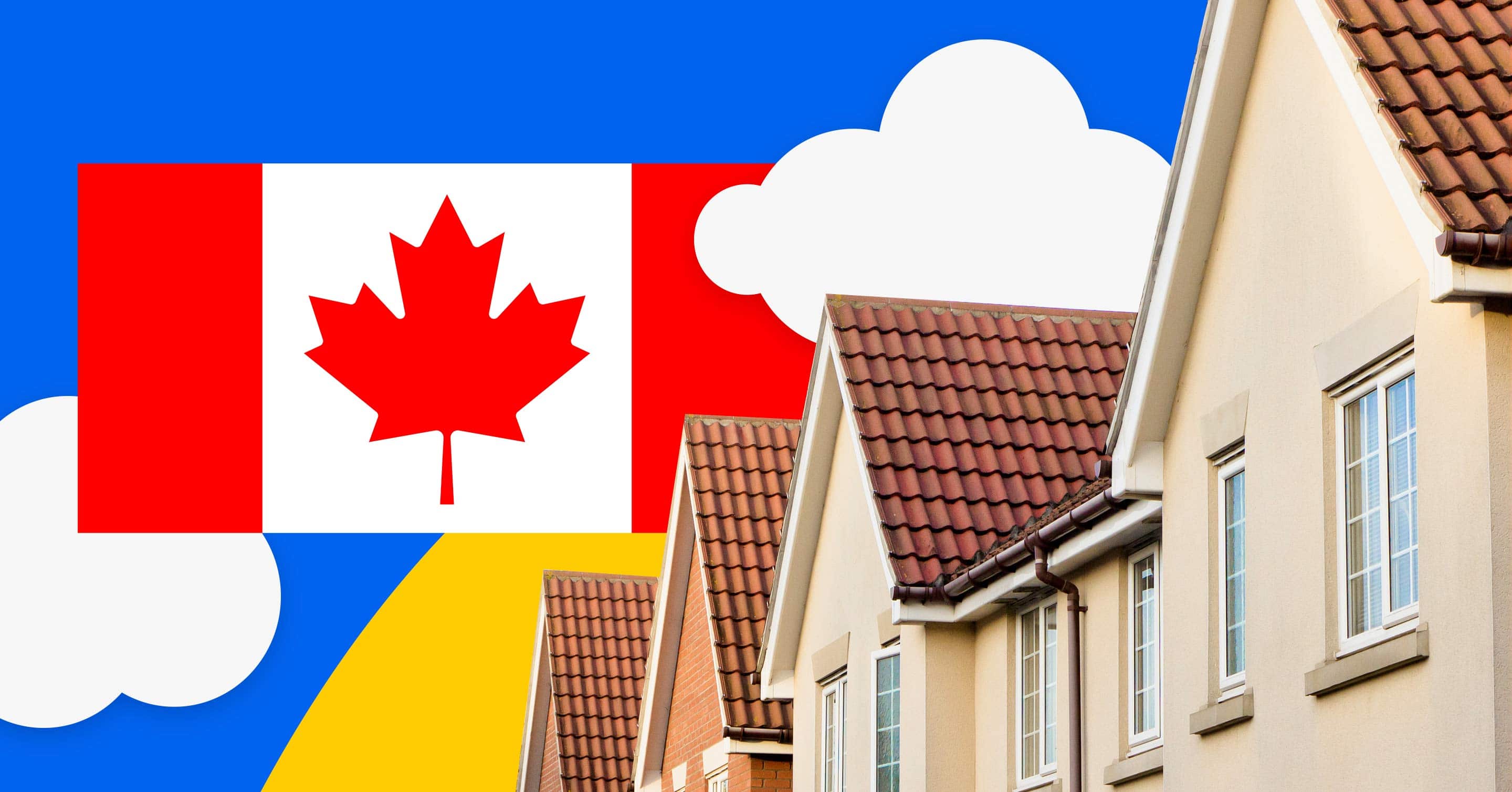Self-Employed Mortgage | Requirements & Qualifications

Table of contents
A recent report from Statistics Canada shows that there are over 2.6 million self-employed Canadians. This means about 15% of the Canadian workforce enjoy the benefits of being their own boss. While this has many perks, one potential challenge this cohort may face is obtaining a self-employed mortgage.
While possible, buying a house while being self-employed involves several considerations. This article aims to dispel the confusion and offer insights into the process within Canada.
Key Takeaways
- Self-employed mortgages in Canada are tailored to meet the needs of the millions of self-employed Canadians who may not qualify with traditional income verification.
- These mortgages are offered by prime, subprime and private mortgage lenders.
- Qualifications for a mortgage vary from lender to lender, but most prime lenders require proof of stable income for 2 to 3 years.
What is a Self-Employed Mortgage?
Self-employed mortgages are designed for borrowers who earn income that is not salaried, or the salary is paid from the corporation they have majority ownership of. The difference is that most self-employed individuals typically have an inconsistent income compared to individuals who consistently get a paycheque at regular intervals.
During a standard mortgage application, the lender considers your income from your pay stubs and confirms with your last 2 years of T4s (Statement of Remuneration) and Notice of Assessments (NOAs). A self-employed mortgage can be a prime or subprime mortgage, meaning depending on how the income is qualified, it could fall in either lending criteria.
Typically, self-employed individuals fall into 1 of 4 categories when qualifying for a mortgage:
- A sole proprietor with 2 years of verifiable (taxed) income
- A sole proprietor without verifiable income
- Incorporated individual with 2 years of qualified (taxed) income
- Incorporated without qualified income
Qualifying For A Mortgage When Self-Employed
Qualifying for a mortgage as a self-employed individual will depend on the length of time you’ve been self-employed and whether or not you are incorporated.
- A sole proprietor with verifiable income requires at least 2 years of income confirmation from T1s and NOA.
- Sole Proprietor without verifiable income requires at minimum 6 months of business deposit history.
- Incorporated with qualified income requires at minimum 2 years of T1s and business financial statements.
- Incorporated without qualified income – requires at minimum 6 months of deposits or stated income.
How much of my appraised home value can I finance when I am self-employed?
If you can prove your income, you can borrow up to 80% of your home’s purchase price with no default insurance and up to 95% with default insurance. Essentially, depending on the size of your downpayment, if you can prove your income through a combination of pre-filing (T1s) and post-filing (NOAs) over two tax years, you can borrow the same amount as a traditional mortgage.
Self-Employed Mortgage Default Insurance Rates
Taxed income ultimately differentiates between accessing lower rates from traditional lenders or higher rates from B or private mortgage lenders. If you can prove your income through T1s and Notice of Assessment (NOA), then mortgage insurance gives you access to traditional mortgages when you have less than 20% to put down.
A downpayment between 5% and 19.99% will require that you purchase mortgage default insurance, while a 20% downpayment will not require default insurance. However, these rates may differ if you cannot prove your income.
Mortgage Default Insurance Rates With Proof of Income
As mentioned above, if you can provide proof of income with T1s and NOAs, insurers like CMHC, Canada Guaranty, and Sagen have the following mortgage default insurance premium rates.
| Down Payment | 5% – 9.99% | 10% – 14.99% | 15% – 19.99% | 20% + |
| Insurance premium(as a percentage of your total mortgage net of downpayment) | 4% | 3.10% | 2.80% | 0% |
Mortgage Default Insurance Rates Without Proof of Income
Private insurers, Canada Guaranty and Sagen, allow borrowers with strong credit profiles access to self-employed mortgage insurance when there is limited or non-traditional documentation to provide proof of income. You would require a minimum downpayment of 10% and opt for a lender offering a business-for-self (BFS) mortgage program through either of these insurers.
A higher insurance premium is charged to offset the insurer’s risk due to borrower default, as the self-employed borrower may come with additional risks such as industry or business cycle risk. The lender may also attach a premium to their mortgage rate for additional risk and compliance due diligence.
| Down Payment | 5% – 9.99% | 10% – 14.99% | 15% – 19.99% | 20% + |
| Insurance premium | Not applicable | 5.85% | 3.75% | 3.30% |
CMHC Self-Employed Mortgage Insurance
OSFI requires borrowers seeking prime lending with down payments of less than 20% to purchase default mortgage insurance in Canada. CMHC self-employed borrowers who can verify their income get the same treatment as traditional mortgage borrowers regarding insurance premiums, mortgage premiums, and qualification criteria.
The basic CMHC requirements are as follows:
- Maximum purchase price/lending value must be below $1,000,000
- Maximum loan-to-value (LTV) of 95% or downpayment as low as 5% for the initial $500,000 and 10% for the remainder of the home’s assessed value
- At least one borrower must have a minimum credit score of 600
- A maximum amortization period of 25 years
- Maximum Gross Debt Service Ratio (GDS) of 39% and maximum Total Debt Service Ratio (TDS) of 44%
The major difference between private mortgage insurance and CMHC mortgage insurance is the income verification required by CMHC for self-employed individuals.
CMHC requires the following to verify the length of business operations:
- Income tax returns (NOA)
- Business credit reports (if incorporated)
- GST returns
- Active business account statements (if incorporated)
- Financial statements and a Review Engagement Report signed by an accountant (if incorporated)
- Business license and/or articles of incorporation
- Audited financial statements (if incorporated)
CMHC also requires the following to verify income:
- NOA, accompanied by T1 General
- Proof of Income (POI)
- Statement of Business (T2125)
Additionally, if you have been self-employed for less than 2 years or in the same line of work for less than 2 years, CMHC may require the following additional supporting documentation to determine eligibility:
- Proof of acquiring an established business
- Sufficient cash reserves
- Predictable earnings
- Previous training and education
- Demonstrated history of managing credit
- Previous employment documentation based on type of income
- Recent account statements
- Business documentation
- Signed contracts
Types of Self-Employed Income Verification
There are three major verification types based on the income declared:
- Traditional Income – Income that is taxed and averaged over two years
- Non-traditional income – Verified through dividends paid or deposit history, may include gross-ups from corporation tax filings.
- Stated income
Traditional Income
Traditional income under which regular employment income is typically verified includes a 2-year average from line 15000 from T4s and Notice of Assessments (NOAs). This could be a 2-year average from line 12000 (Dividends from a Cdn Corporation), which could be in addition to their 2-year average of line 15000 on their NOA. This type of verification may not work for most self-employed business owners looking to confirm their “real” income.
Non-Traditional Income
Here, a person’s T1s and NOAs do not reflect their actual income. Instead, the business’s bank and financial statements can be used to verify or gross up their income. This is the category in which most self-employed individuals typically fall.
Stated Income
This is otherwise referred to as “no income verification mortgages.” B Lenders and private lenders mainly accept this verification method. Some A Lenders permit it with the Sagen Alt-A Program. However, this program is extremely strict and may be limited to those with exceptional credit history and an established business.
To assess the reasonability of the borrower’s stated income, a business for self (BFS) program from Canada Guaranty called the Low Doc Advantage requires the amount of income confirmed by line 15000 on the NOA from the most recent tax year, as well as the stated gross revenue of the business, the type of business owned and operated, and the ownership structure.
Required Documents for a Self-Employed Mortgage
A self-employed mortgage requires your Notices of Assessment (NOA) and Income Tax Statement (T1). This is the minimum to qualify for a mortgage when self-employed and unable to provide T4s.
Depending on the lender, you may also be required to provide the following:
- Personal and business credit scores
- Financial statements for your business
- Proof indicating full payment of HST and/or GST
- Proof of principal and majority ownership in the business
- Contracts showing previous and potential/expected revenue for the next couple of years
- Copy of GST/HST number, Articles of Incorporation, or Business Number Registration
- Evidence indicating that your downpayment was not gifted
- Proof of income taxes being up to date
Dividend income from a traditional investment (RRIF, LIF, etc.) may be used to qualify your mortgage, provided you can demonstrate a 2-year stability period and guarantee continued income through the mortgage term.
Here are four primary requirements that all lenders will typically request:
Notices of Assessment and Income Tax Statement (T1)
Past 2-3 Years
Lenders may require 2-3 years of T1 or NOAs to verify your income, including the self-employed income reported as business income. The NOA is also used to see if you owe unpaid taxes. Lenders will consider unpaid taxes a red flag, and the CRA could eventually register a lien against your home or seize assets if you cannot pay the unpaid taxes.
Articles of Incorporation, Business Number Registration, or GST/HST Account Number
These provide the lender with information about the length of time you have been self-employed or running your business. Articles of incorporation are limited to corporations only. If you make more than $30,000 in a quarter of an entire calendar year or the previous four or fewer fiscal quarters as either revenue or gross sales, you must register for a GST/HST number.
Bank Statements
Bank statements from your business account and your T2 (Corporate income tax return) can serve as additional proof to solidify your business income claims. Future income from signed contracts can also be included, even if they have yet to be completed.
Financial Statements
Financial statements can also be used to prove business income. This is especially useful during non-traditional income verification, where the lender wants to consider both your personal income and business income.
Self-Employed Mortgage Lenders
All three categories of mortgage lenders in Canada offer self-employed mortgages.
A or Prime Lenders
A lenders cover Canada’s big banks and typically have the strictest lending criteria. They require prospective borrowers to pass a mortgage stress test to demonstrate that they have stable and sufficient income to cover debts should interest rates increase. Some A Lenders have mortgage products specifically tailored for self-employed individuals.
B or Subprime Lenders
B lenders also known as subprime lenders, are an alternative option for those unable to meet the mortgage qualification criteria of an A lender. B lenders are more flexible with lending criteria as they do not offer default-insured lending, and interest rates will be priced higher accordingly to compensate for the additional risks.
Some lenders will offer both A and B lending solutions through separate channels of their mortgage business. Some big banks may also offer B lending through their A lending or private/wealth banking channels, setting prices and guideless based on their relationship with the client.
For self-employed individuals with 20% to put down on their home purchase, B lending is the most common solution. They offer exceptions on debt-to-income (DTI) ratios due to the lack of personal income if registered as a corporation.
Private Lenders
Private lenders can be individuals, groups or corporations that lend money privately. They set their own terms and conditions for the approval process and the mortgage. Private mortgage lenders can set their own terms and rates as they are not regulated.
Private mortgages are typically a last resort for borrowers who cannot meet the typical risk requirements of A and B lenders. Interest rates are typically much higher than those of A and B lending solutions and usually come with higher fees than B lending. Mortgage regulators will require private mortgages to carry an exit strategy for the borrower, as they are typically advisable for temporary financing.
What is a Stated Income Mortgage?
With a stated income mortgage, the lender doesn’t verify your income via traditional methods. Instead, they allow you (sign a declaration) to state or declare your income within reasonable limits. With this type of mortgage, you often won’t be required to provide an abundance of documentation to prove your income.
Instead, the stated figure must be considered reasonable compared to the average income in your business or industry. Examples of documents used to verify Stated Income may or may not include Bank Statements, Invoices, etc.
Insured stated-income mortgages allow for a downpayment as low as 10% but require mortgage default insurance. A good credit score is a base requirement here, and less than great credit would have to be mitigated with increased income (lower debt-to-income ratios) or higher downpayment (lower loan-to-value ratios) to increase the chance of approval.
Similarly, stated income mortgages are not insured by CMHC; instead, one of the private mortgage default insurers, Canada Guaranty or Sagen, would be the only option.
Frequently Asked Questions
Can I get a self-employed mortgage if I’m recently self-employed?
You can still qualify for a mortgage even if you recently became self-employed and do not have the required 2-year business running history. Sufficient cash reserves, the acquisition of an established business, an excellent credit history, recent account statements, and signed contracts can all help support your mortgage application. However, whether you qualify with prime or subprime lending will depend on your tenure within the same or similar industry before and during self-employment.
How much can I borrow for a mortgage if I’m self-employed?
If you are self-employed and can produce the required documents to qualify for a traditional mortgage, you can borrow up to 95% of the home value with mortgage default insurance and 80% without.
However, if you cannot produce the required proof of income for the traditional route, you can borrow up to 90% with mortgage default insurance and opt for a lender that works with either Sagen or Canada Guaranty.
Can I get a self-employed mortgage without proof of income?
Yes, you can get a self-employed mortgage without proof of taxed income. Private insurers, such as Canada Guaranty and Sagen, will allow borrowers access to mortgages with limited proof of income. You need to make a minimum downpayment of 10% and opt for a lender that provides these types of mortgages.
Why are subprime mortgages more suitable for incorporated individuals?
Typically, lenders will only use the income that is taxed if qualifying for low prime lending mortgage rates. Incorporated individuals need to understand the costs of qualifying for their mortgage using a cost-savings approach. If qualifying for a typical house in Vancouver or Toronto requires you to file a gross income of close to $300K over 2 or more years, then you must assess if the income taxes paid on this will be greater than or equal to the costs on a yearly basis of a typical subprime mortgage at 7% to 10% (plus fees). It’s advisable to speak to a licensed and knowledgeable tax and mortgage specialist before making a decision.
Final Thoughts
Qualifying for a mortgage as a self-employed individual is, in fact, possible. As with traditional mortgages, increasing your income, improving your credit score, and having a sufficient down payment boost your chances of qualifying.
Reach out to nesto’s licensed and knowledgeable mortgage experts and understand how to make your self-employed income qualify you for your mortgage.
Why Choose nesto
At nesto, our commission-free mortgage experts, certified in multiple provinces, provide exceptional advice and service that exceeds industry standards. Our mortgage experts are non-commissioned, salaried employees who provide impartial guidance on mortgage options tailored to your needs and are evaluated based on client satisfaction and advice quality. nesto aims to transform the mortgage industry by providing honest advice and competitive rates using a 100% fully digital, transparent, seamless process.
nesto is on a mission to offer a positive, empowering and transparent property financing experience – simplified from start to finish.
Contact our licensed and knowledgeable mortgage experts to find your best mortgage rate in Canada.
Ready to get started?
In just a few clicks, you can see our current rates. Then apply for your mortgage online in minutes!















